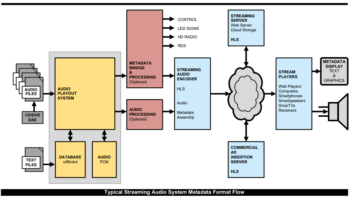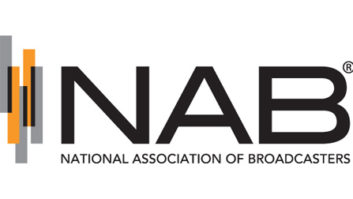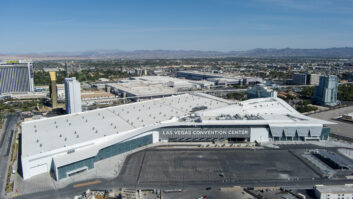At CES 2007, the NRSC is expected to consider the report from its Surround Sound Audio Task Group, or SSATG, perhaps approving it for final publication. I am the co-chair of SSATG. Here’s a bit of a preview of what to expect — or more importantly, what not to.
While the report contains plenty of information — it’s kind of an owner’s manual for station engineers considering conversion to 5.1 broadcasting — it does not recommend the selection of a single standard for surround radio in the United States. To some this may seem disappointing, and a rejection of long-established practice in broadcasting — or reminiscent of AM stereo — but it’s important to understand the significant differences between this transition and those of the past.
Multi-format surround is here
First, unlike some earlier broadcast format upgrades (like FM stereo), radio is well behind the curve with surround. When FM added stereo, for example, the two-channel approach was still emerging in other consumer audio formats. Moreover, FM had to consider backward compatibility to the installed base of monaural FM radios, while new consumer audio systems were largely discrete, two-channel devices from the start. (Vinyl disc was an exception, requiring a period of separate stereo and mono discs for backward compatibility, so the FM sum-and-difference multiplex solution seemed uniquely elegant by comparison.)
In contrast, surround sound has been around in one form or another for over two decades prior to its current, serious consideration for radio. As such a latecomer, radio has to acknowledge the already well-established position of surround sound in the consumer audio environment.
Equally important is the fact that this marketplace already includes several competing surround sound encoding formats that all seem to be faring pretty well. Thus the existence of multiple formats does not seem to have thwarted the success of any one of them.
Part of this departure from conventional wisdom is simply due to today’s digital consumer electronics, which with little difficulty and low cost can “automagically” adapt to multiple formats, given adequately unambiguous signaling or detection methods. For example, multi-codec digital music players have become the norm, even in cheap, pocket-sized form factors.
This implies that the old rule of “single-standard-or-else” for broadcasting may no longer apply in all cases.
Diversity
While this new flexibility may bring some added complexity, it also carries other values that can make it worthwhile on balance. Consider that competition almost always begets improvements, and the consumer ultimately benefits. In this case, now that radio has begun to explore surround sound, it is a boon to the industry that at least four major players in the surround business (Dolby, MPEG, Neural and SRS) have shown their strong support in providing solutions appropriate for both analog and digital radio systems. Any good steward of broadcasting would do well to encourage rather than discourage these proponents’ interest in increasing the value of U.S. radio service.
And although these companies all produce different surround formats, one element of their engagement with radio is common — and essential: By various means, they all provide backward compatibility to stereo and mono receivers.
Perhaps most important is another result of the NRSC’s exploration regarding this diversity. Unlike the AM stereo issue, the different formats proposed for surround broadcast do offer at least a nominal degree of interoperability. So even if a surround-capable receiver does not provide the specifically corresponding decoder for the surround-format encoding that a broadcaster chooses to use, the results will still be acceptable. While the exact image of the original discrete surround mix may not be reproduced with complete accuracy in all such cases, neither will the resulting signal mute or be unacceptably impaired. Typically, a reasonable surround output will result, and stereo or mono listeners will be unaffected in any case. Therefore a future of coexistence among several surround formats in radio broadcasting seems assured, just as it has become in the worlds of television and other consumer video formats.
Competitive advantage
Given the reasonable degree of compatibility of these formats with one another, and to stereo/mono, the NRSC report concludes that choice of format should be ultimately up to the individual broadcaster. This provides each broadcaster with a new method of product differentiation, and allows surround sound to be yet another tool in the creation of a station’s sonic signature — on either its analog or digital signals, or both.
Thus station engineers can consider the addition of a surround encoding system like an element of station audio processing rather than part of a broadcasting format. As such, it is an optional element of the audio signal that can be freely explored and appropriately used by broadcasters, and is not subject to standardization or rulemaking.
Should one particular surround encoding format ultimately predominate in U.S. radio, or should a station later change its preference of format, it is a simple matter to change to another surround encoding format (akin to exchanging one brand of audio processor for another). In fact, a station’s chosen path to surround broadcasting could well be a multi-stage process, as the NRSC document describes.
If you are interested in a thorough and unbiased evaluation of options for surround broadcasting, well vetted by the surround industry’s experts, along with some caveats and recommendations for the conversion process at stations, seek out the NRSC report when it becomes available.
RW welcomes other points of view.












